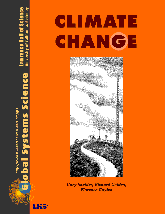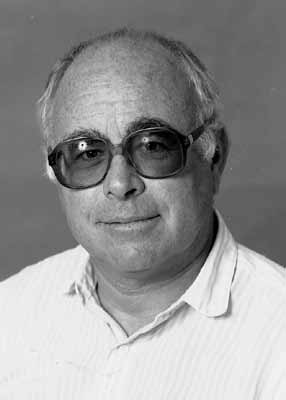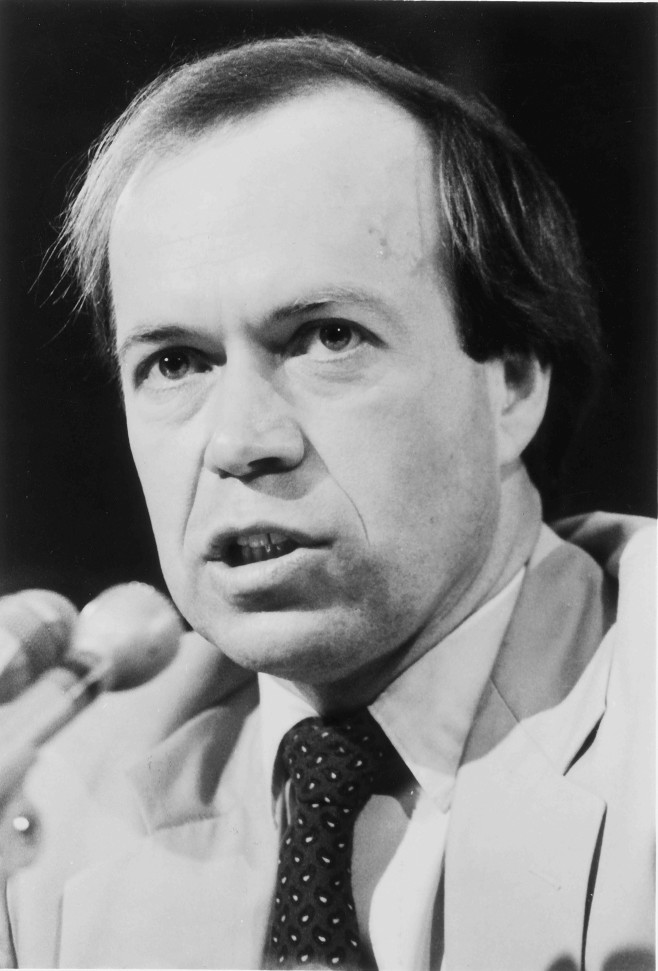CC4.1. How has the debate changed over decades?

{ Climate Change Contents } { All GSS Books }
The first point Jim Hansen made to Congress back in 1988 was, “the globe is heating up.” Let’s look closely at the scientific process in action by examining how the debate around this question has changed since then. Has the scientific community come to consensus on that point? This investigation is meant to hone your critical thinking.
Materials:
Two different colors of index cards, sticky-note paper, or sheets of paper.
1989 article: S.F. Forum on Global Warming Hears Heated Scientific Debate, by Charles Petit, The San Francisco Chronicle.
1999 article: Earth’s Temperature Shot Skyward in 1998, by Richard Monastersky, Science News.
More articles from the Stay Current for chapter 4 page, that span time different periods since 1999.

What To Do
- Divide the news and magazine articles among your group members.
- On sheets of paper or index cards write the years in bold, e.g. 2000, 2003, 2006, 2010…. Spread these out on a table or the floor to create a timeline.
- Search for statements that support and statements that oppose Hansen’s claim that “the globe is heating up.” Put those statements colored paper, cards, or sticky-notes — use one color for supporting statements and another color for opposing statements. On the back, write the source of the information or the person or agency that made the statement.
- Place each statement on the proper place on the timeline, statement-side-up.
- Discuss the following questions and write brief answers to them:
a. What changes do you see in the information as time goes by?
b. At what point do you think the majority of scientists agreed with Hansen’s original statement?
c. What do you think swayed the scientific community toward consensus on the question of whether or not the globe is heating up? - Now flip all the statements over so that the source/person/agency side is face up.
Discuss and write answers to these questions:
a. Do you see any scientist’s name appearing on two different colored cards?
When did the change happen?
What do you think caused the change?
b. What do you think these observations say about the scientific process and/or the scientists?
Optional:
Compare and contrast just the 1989 and 1999 article excerpts. Answer these questions:

In the 1989 article...
- i. Imagine you’re in the audience in San Francisco when the scientists made their 1989 presentations. James Hansen is not quoted in the 1989 article. Based on the descriptions in the article and earlier in this chapter what do you think he said?
- ii. What do Tim Barnett and James Hanson agree about? What do they disagree about?
- iii. What does Tim Barnett mean by the statement, “Global averages [are] an absolutely bogus concept”?
- iv. On what basis does Thomas Karl disagree with Hanson? What does Hanson say about Karl’s analysis?
- v. Based on this article, as of 1989, did most scientists believe global warming was under way?
Tim Barnett

In the 1999 article…
- vi. Has the data collected between 1989 and 1999 more strongly supported Hanson or Karl and Barnett?
- vii. What disagreements are cited in this article?
- viii. Based on this article, as of 1999, did most scientists believe global warming was under way?
- ix. In your opinion, were Hansen’s conclusions justified at the time?
- x. Does the evidence support his views today?
James Hansen
S.F. Forum on Global Warming Hears Heated Scientific Debate
By Charles Petit, The San Francisco Chronicle,
1989 December 7, page A18
Excerpt:
Scientists differed sharply yesterday whether the greenhouse effect is already warming the planet—and a few doubted the widely believed forecasts of climate catastrophe in the next century.
At a meeting of the American Geophysical Union in San Francisco’s Civic Auditorium, there was a rare public confrontation between a prominent scientist warning that global warming is already under way and threatens to wreak havoc in the next century, and other researchers who say it is too early to tell.
It is a controversy certain to heat up as scientists measure the shifting chemistry of the atmosphere, tune computer models of the world’s ocean, clouds, and winds, and analyze unreliable temperature records from the last century.
James Hansen, director of the NASA Goddard Institute for Space Studies in New York, repeated the assertion he made to Congress a year ago that he is 99 percent certain that the globe will warm dramatically, by 3 to 9 degrees Fahrenheit, during the next century. This is a faster rise than any known in geologic history, and would make the Earth hotter than it has been in 100,000 years.
But a small band of researchers believe Hansen in particular, and many others, are making forecasts that go beyond the evidence.
Thomas R. Karl, of the National Oceanic and Atmospheric Administration research center in North Carolina, said Hansen’s main contention that warming has already begun is not backed up by temperature records going back to 1850.
Last year Karl said that when temperatures dating back to the turn of the century are studied, and corrected for generally warmer readings in industrial areas, there is no long-term trend leading upward.
Climatologist Tim P. Barnett of the Scripps Institute of Oceanography in San Diego joined Karl in the criticism. His graphs and plots suggest that natural oscillations in global temperature are so large that they would conceal any signal that the warming had already begun.
Barnett took a hard shot at Hansen’s use of global temperature averages as evidence for accuracy of computer predictions. Global averages, he said, are “an absolutely bogus concept . . . to be real blunt about it, to use Southern California surfer jargon, (use of) global averages sucks, guys.” Barnett told the morning meeting of several hundred climate experts.
Hansen responded that his own analysis of the same data used by Karl not only confirms a global warming, but suggests the United States has warmed by up to half a degree in the past century. He said Karl “made an embarrassing mistake” in not using the data correctly.
Hansen got powerful support from a mathematician’s detailed statistical analysis of variations in global temperatures for the past 100 years.
Statistically, the chances that the carbon dioxide is not causing warming are about 2 in 1 million, said David J. Thompson of the Mathematical Sciences Research Center at AT&T Bell Labs in New Jersey. “It looks like cause and effect to me,” he said.
Greenhouse doubter Barnett said that he shares Hansen’s view that the future does not look good. “Most scientists agree that if we put most of the stuff into the atmosphere (that is predicted), we will have a real climate problem . . . a climate regime that human civilization has never seen.”
The session moderator, H. Frank Eden of the Joint Oceanographic Institutions, said, “We may not agree that we can already see the warming, but most of us believe in the general idea of the greenhouse effect.”
Earth’s Temperature Shot Skyward in 1998
By Richard Monastersky, Science News, 1999 January 2, page 6
Excerpt:
Global temperatures in 1998 shattered the record high mark, making last year the warmest since at least 1860, and possibly since the end of the last millennium. El Niño deserves part of the credit, say climate scientists, but some researchers also see signs that people are helping to push temperatures into uncharted territory.
The World Meteorological Organization (WMO) in Geneva announced last month that the mean surface temperature of the globe in 1998 reached 0.58°C above a base line average for the period from 1961 through 1990. For climatologists, who worry about global changes in hundredths of a degree, last year’s warmth stands out like a Himalayan peak.
“It’s quite large. It represents several days’ lengthening of the growing season,” says David Parker of the United Kingdom Meteorological Office’s Hadley Centre in Bracknell. The Hadley Centre and the University of East Anglia in Norwich supplied much of the analysis in the WMO statement, which includes data through mid-December. The British groups combine surface-temperature measurements made at more than 1,000 land meteorological stations with readings of sea-surface temperature from almost 2,000 ships and buoys.
A separate analysis, completed by NASA’s Goddard Institute for Space Studies in New York, also has 1998 setting a temperature record by a wide margin, says James E. Hansen of the institute.
Climate researchers trace part of the heat to the El Niño ocean warming, which first started developing in mid-1997 in the Pacific. El Niño faded in May 1998, turning the tropical eastern Pacific cool, but temperatures remained elevated in many other ocean regions. In particular, the year brought “unprecedented warmth” to the Indian Ocean, according to WMO.
All the continents baked in 1998 except for northern parts of Europe and Asia. The southern United States faced extreme heat and drought during spring and summer. In central Russia, a June hot spell killed more than 100 people and fed large fires, WMO reports.
With El Niño now only a memory in the Pacific, Parker expects the globe to cool off in 1999, although probably not back to the 1961 to 1990 base line. The globe has warmed markedly during the past decade, so much so that 7 of the 10 warmest years on record occurred after 1990. All of the top 10 postdate 1983.
The recent warmth amplifies concerns that greenhouse gases are turning up Earth’s thermostat, according to some researchers. A United Nations consensus panel* announced in 1995 that the balance of evidence suggests people are influencing climate. Now, says Parker, “the balance is tipping a bit further in that direction.”
Greenhouse skeptics point out that the lower atmosphere up to 7 kilometers has not warmed over the last 20 years, since satellites started making measurements. These readings showed substantial warming in early 1998, but atmospheric temperatures later fell back to the 20-year average, says John Christy of the University of Alabama in Huntsville, who analyzes the satellite data.
Still, people are most concerned about Earth’s surface, which has warmed by almost 0.7°C since the end of the 19th century, according to WMO. The hot spell of the past two decades may be unprecedented in the last 1,200 years, according to Jonathan T. Overpeck of the National Oceanic and Atmospheric Administration in Boulder, Colo., who discussed historical climate data last month at a meeting of the American Geophysical Union in San Francisco.
When Overpeck compiled work by scientists who have examined tree rings, glaciers, and sediments from lakes and oceans, he found no evidence for the existence of a global warm spell during the Medieval period—a time that climatologists once regarded a universally balmy. While Europe and Greenland were warm during this phase, South America, Antarctica, and Australia were not. Overall, he says, that time was not as warm as today.
* The International Panel on Climate Change (IPCC) includes approximately 2,500 scientists, including Tim Barnett and Thomas Karl

